A garden within a garden: Detail of a large landscape, Aunt Martha’s Magic Garden, usually found on display in the Bonsai Exhibition Garden, mid-May through November.
About the Bonsai Exhibition Garden
The Bonsai Exhibition Garden took its place as a signature feature at The North Carolina Arboretum in 2005 with Arthur Joura leading the design team and overseeing construction. Beautiful in all seasons, this world-renowned garden draws thousands of visitors each year to be inspired by plant selections, design features and, of course, the tiny trees and miniaturized landscapes in a place specially designed for their display. Up to 50 bonsai specimens are shown in the garden from May through November.
Gardens, at least the good ones, are full of life.
“The Arboretum's Bonsai Exhibition Garden is an excellent garden, and as such it teems with life. We manage it to be that way. No matter the season, a visit to the bonsai garden will involve encounters with other forms of life, and often not just plants. There is a vibrantly abundant pulse of being all through the growing season, so much so that a visit to the bonsai garden can feel like taking a dive into the river of life.” — Arthur Joura
Represented are traditional Asian bonsai subjects such as Japanese maple and Chinese elm, tropical plants such as willow-leaf fig and bougainvillea, and American species such as bald cypress and limber pine. Of particular importance are the plants native to the Blue Ridge region, such as American hornbeam and eastern white pine, which enable the Arboretum to bring the thousand-year tradition of bonsai home to the mountains of Western North Carolina. Interpretive signage throughout the garden conveys information about the art and history of bonsai — and the Arboretum’s own creative approach to it.
Bonsai are back on display in the garden from the second Saturday in May, World Bonsai Day, through November. The garden is open year round.
During the winter months, a selection of tropical bonsai are on display in the Baker Exhibit Greenhouse.
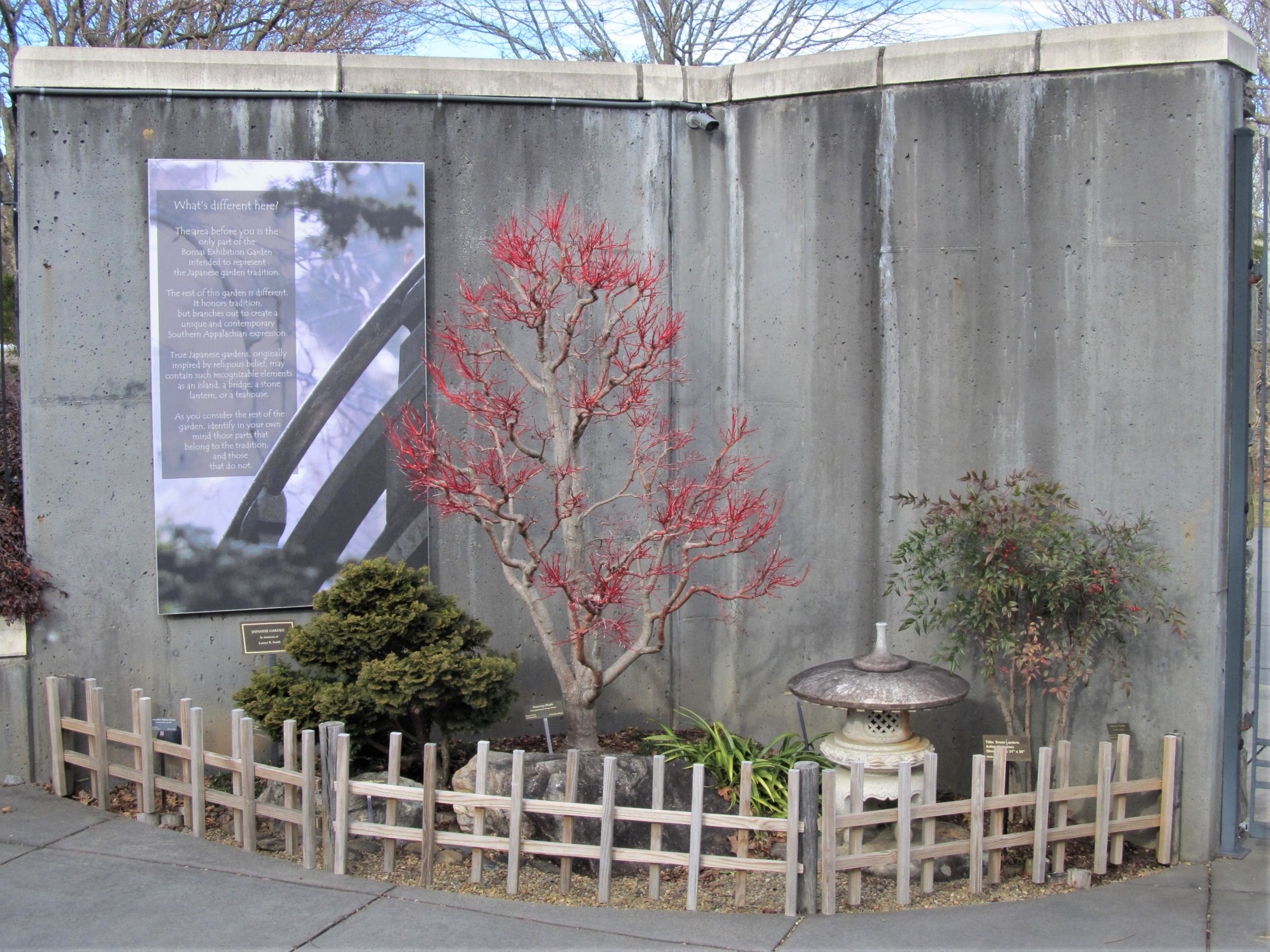
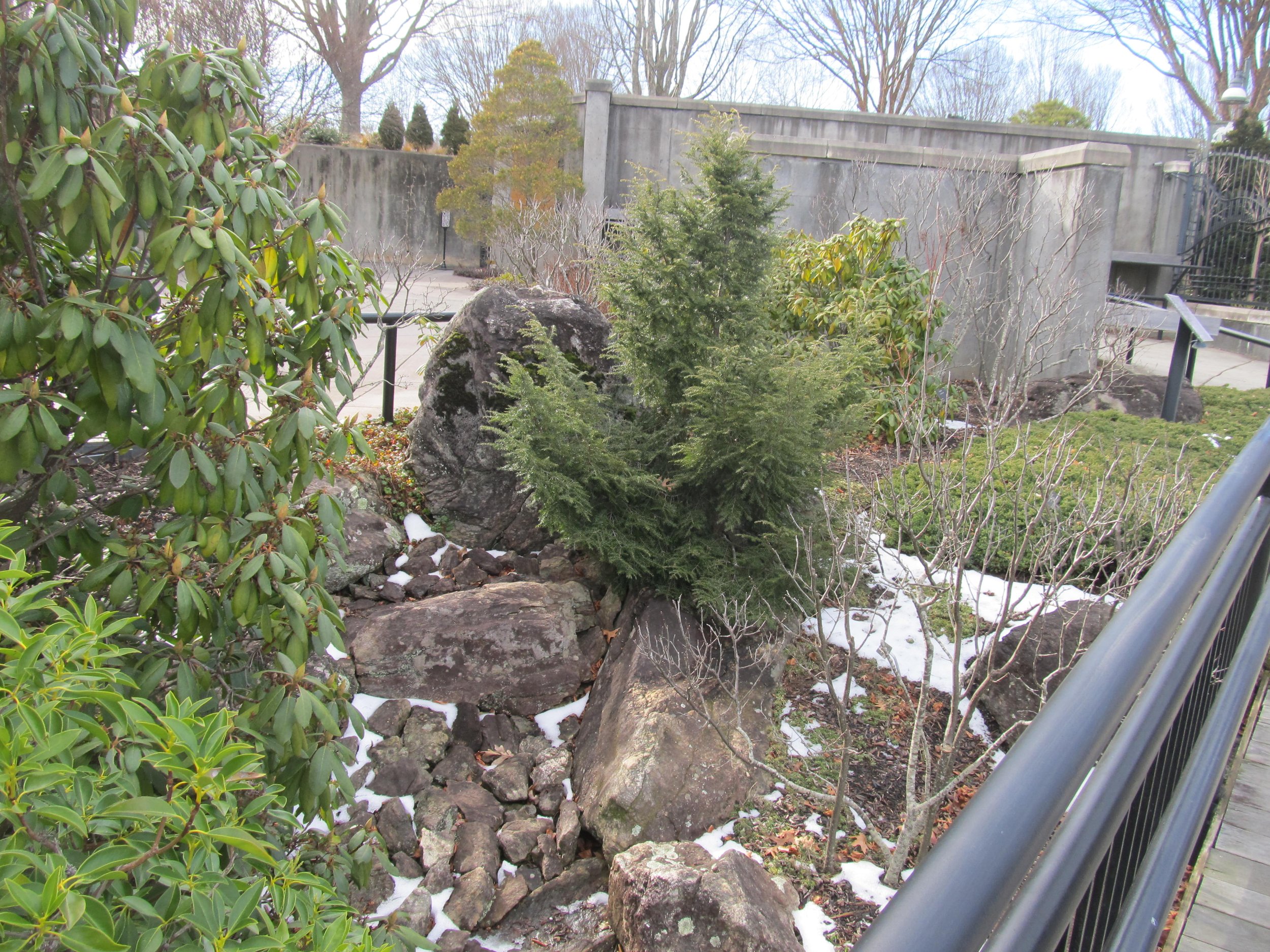
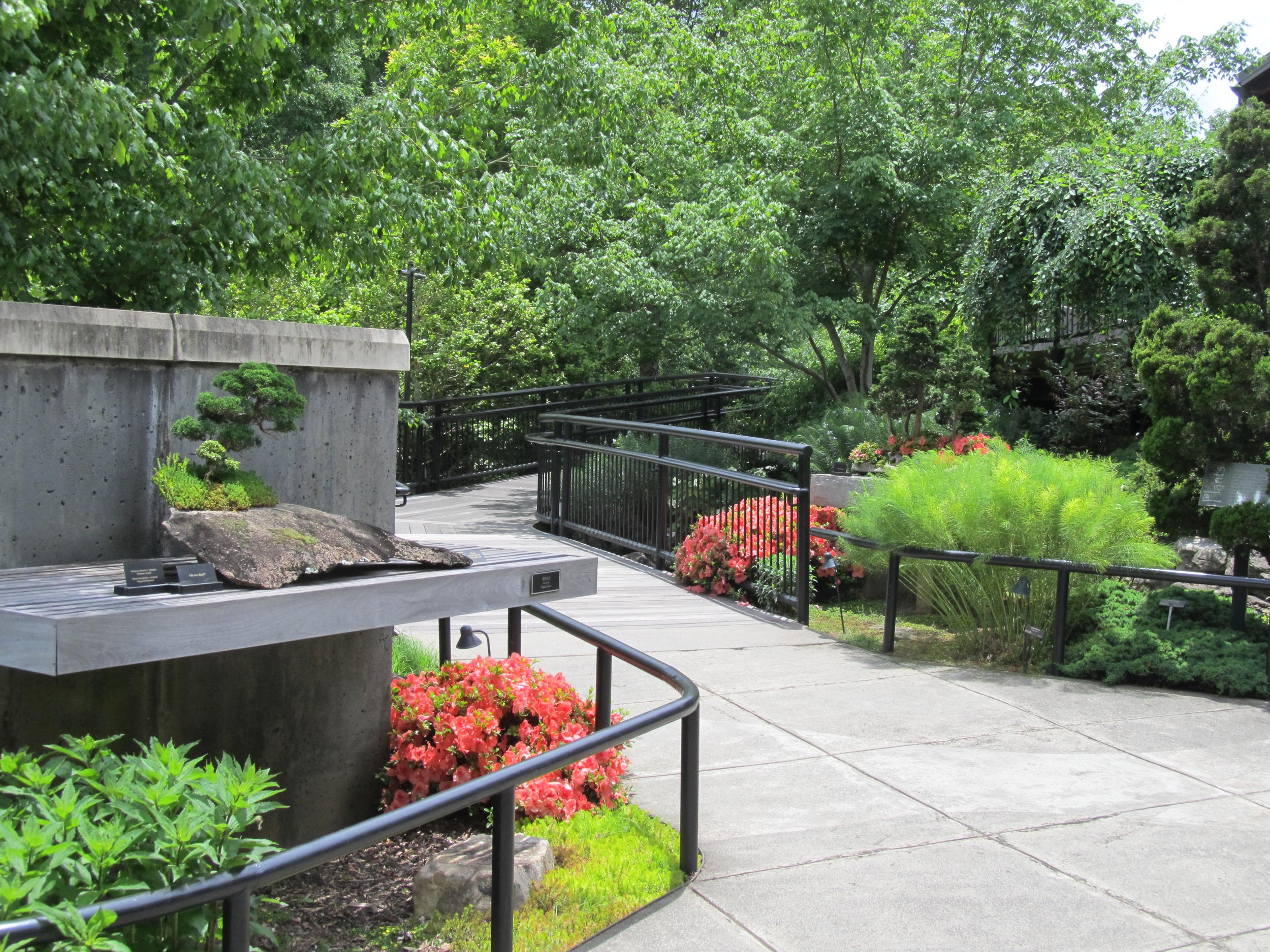
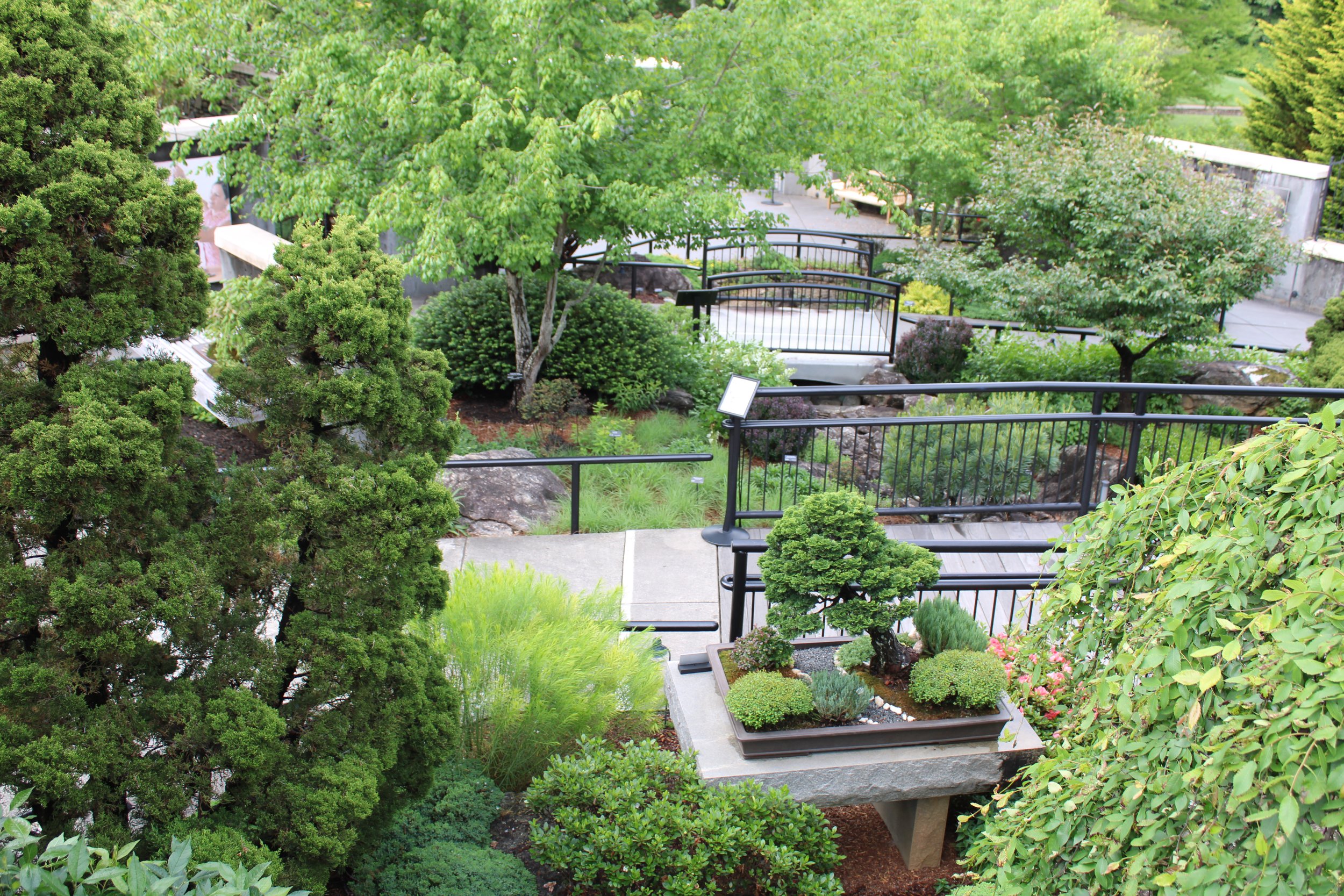
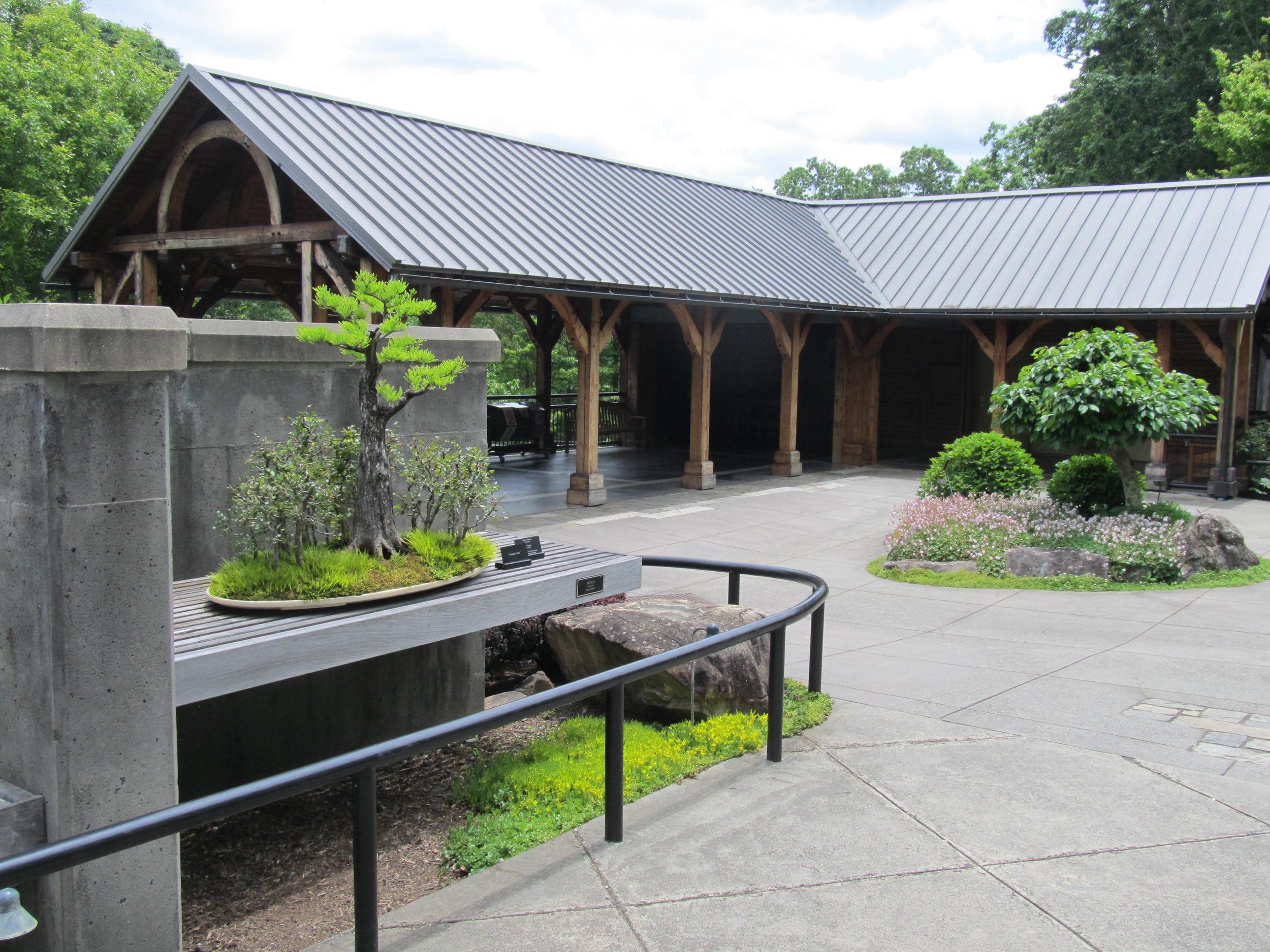
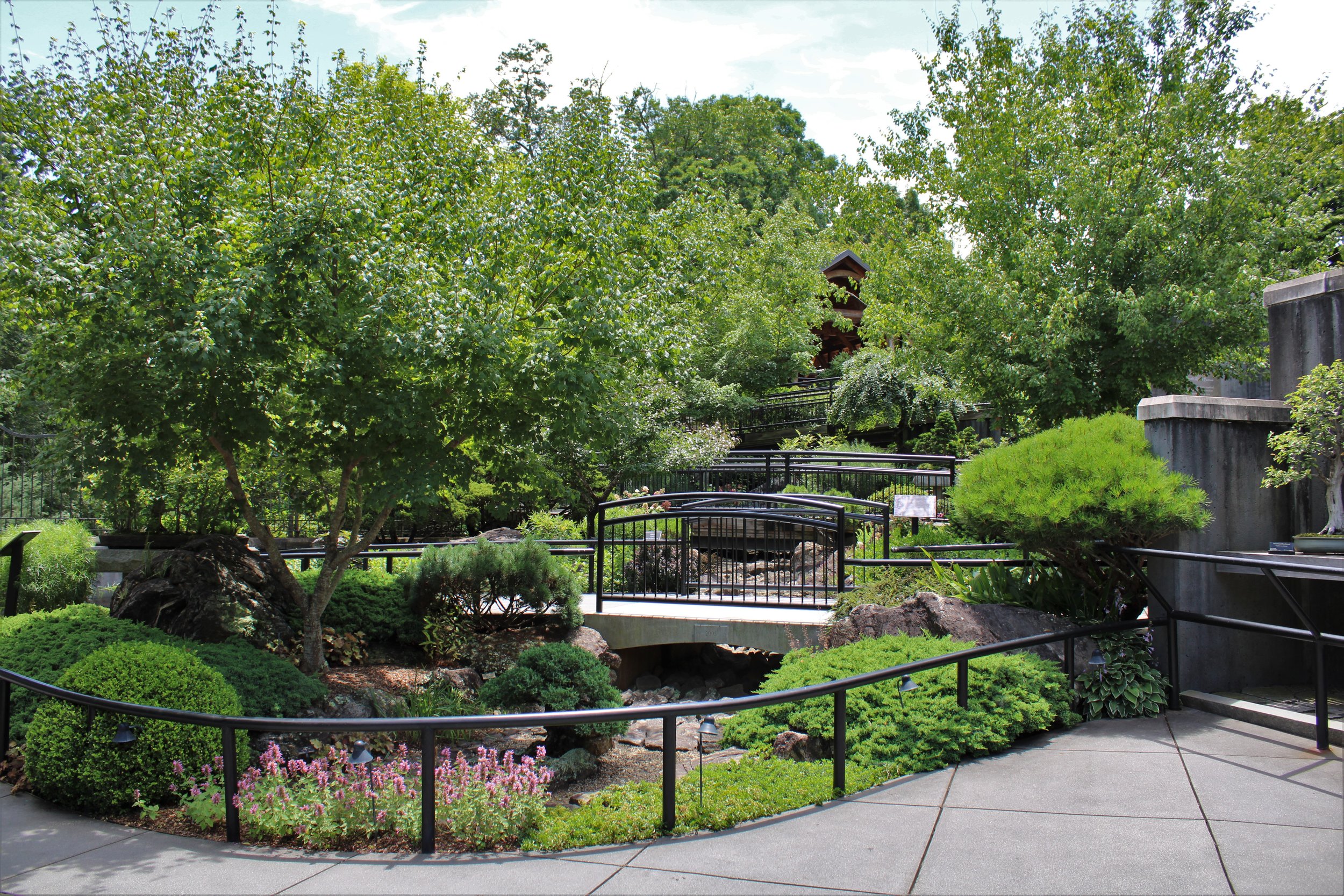
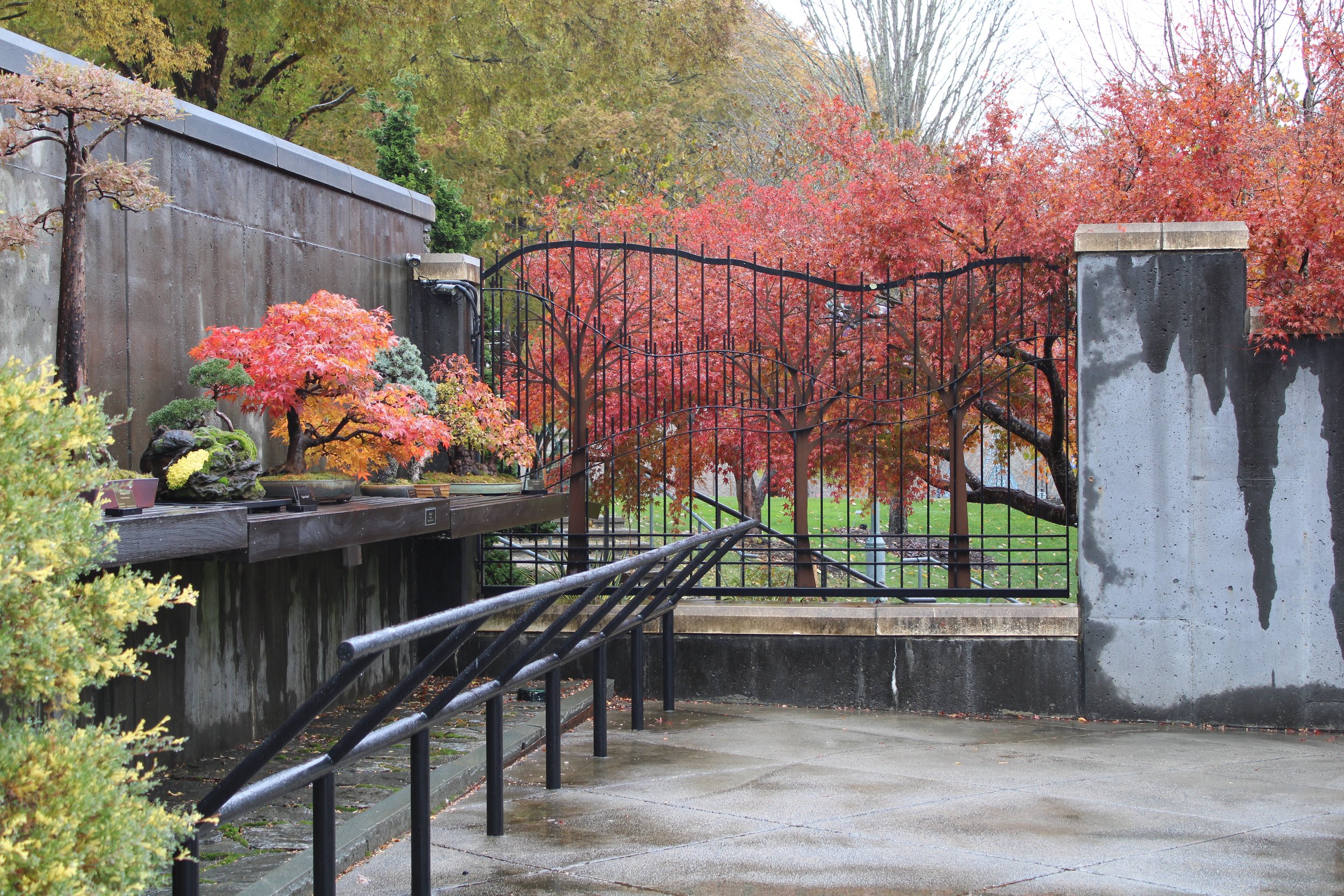
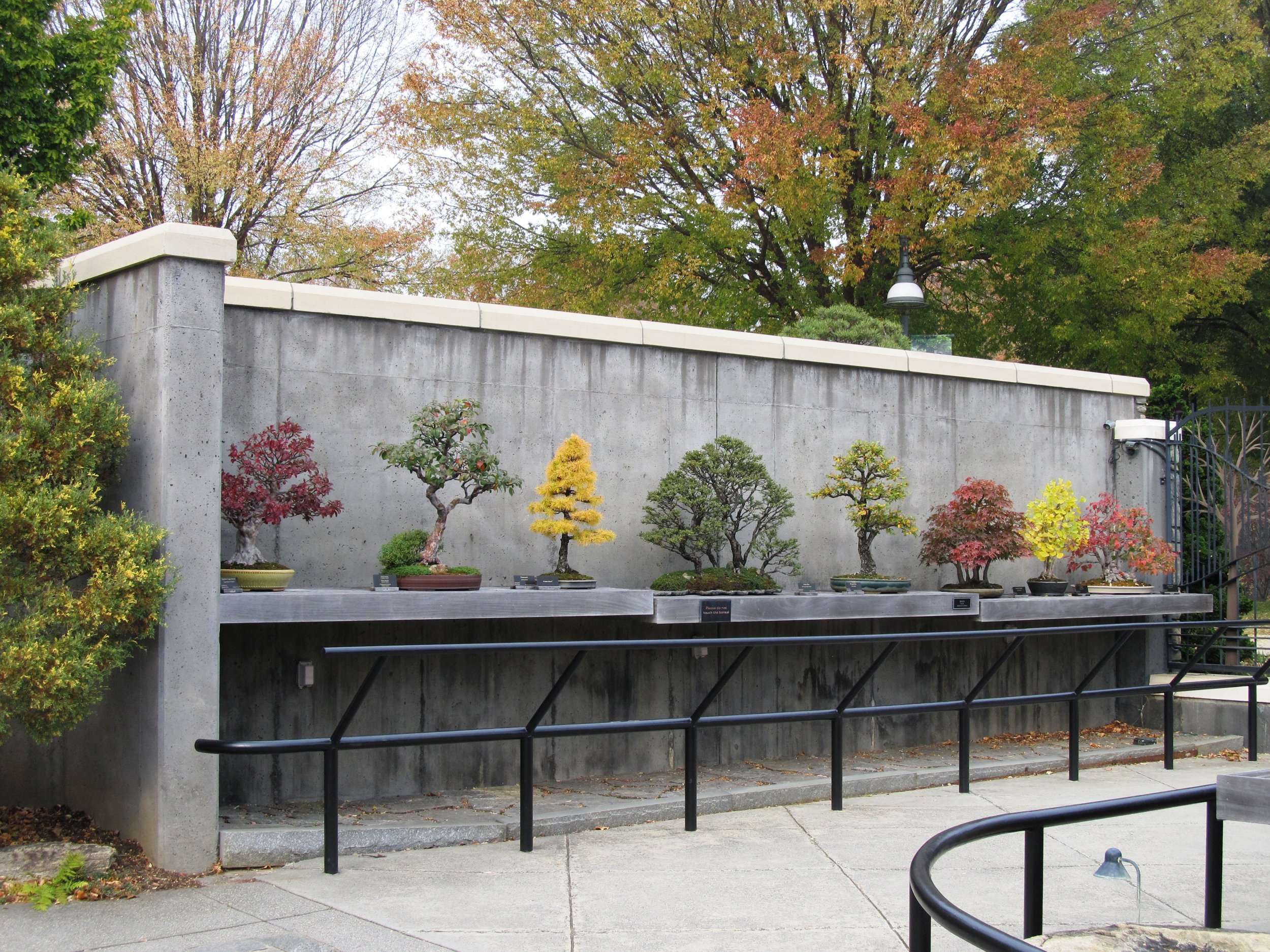
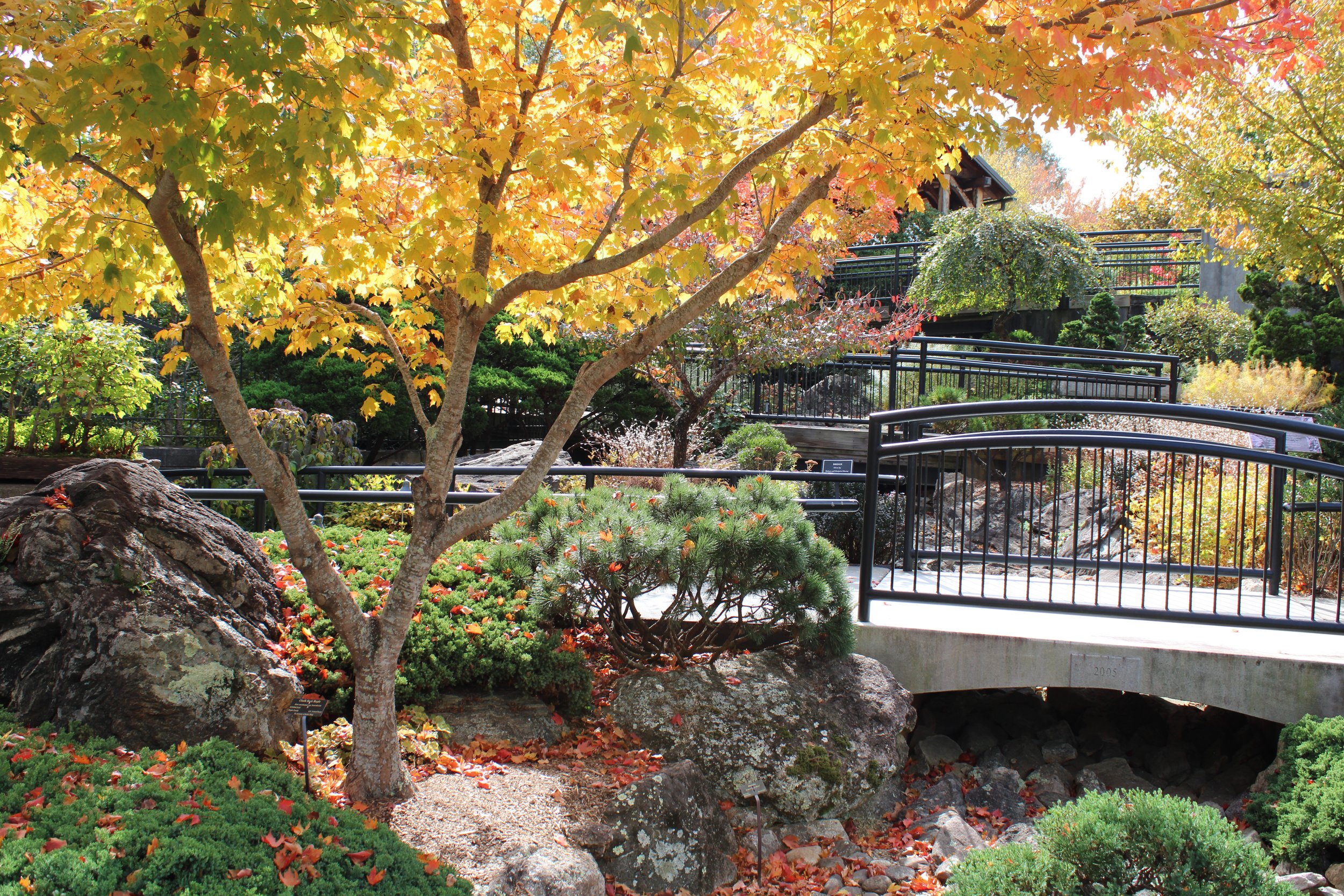
“The two things are one: The garden is designed to elevate the experience of bonsai, and the bonsai never look better than when they’re on display in the garden.”

